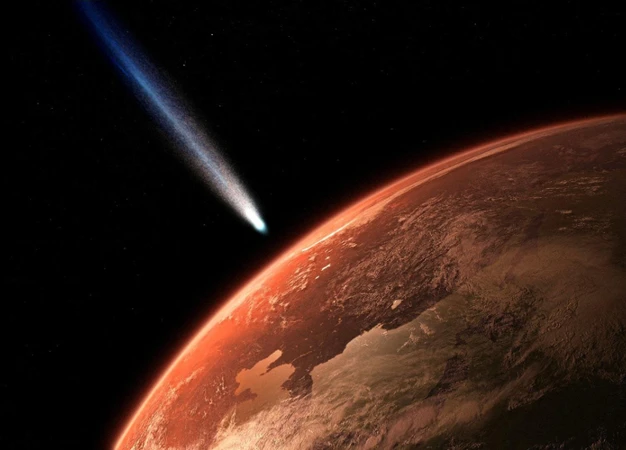Contents
- Unraveling the Mysteries: The Intriguing Connection Between Comets and Astrobiology
- What are Comets?
- Astrobiology – The Search for Life
- The Connection
- Current Research and Exploration
- Implications and Future Prospects
- Conclusion
-
Frequently Asked Questions
- 1. What makes comets different from other celestial bodies?
- 2. How do comets form?
- 3. Can comets bring water to other planets?
- 4. Have we ever visited a comet?
- 5. Are comets a threat to Earth?
- 6. Are there signs of life on comets?
- 7. Can comets collide with each other?
- 8. How do scientists study comets?
- 9. Can comets be seen from Earth?
- 10. How long do comets last?
- References
-
Frequently Asked Questions
- 1. What role do comets play in the origin of life on Earth?
- 2. Could comets be potential habitats for life?
- 3. What is panspermia, and how are comets related to it?
- 4. How do scientists study comets up close?
- 5. What are some astrobiology missions that have encountered comets?
- 6. How do scientists analyze comet samples?
- 7. Have comets been found to contain evidence of extraterrestrial life?
- 8. What implications could the connection between comets and astrobiology have?
- 9. What are some future prospects in the study of comets and astrobiology?
- 10. How does the study of comets and astrobiology impact our understanding of the universe?
- References
- Read More
Unraveling the Mysteries: The Intriguing Connection Between Comets and Astrobiology
As we gaze up at the night sky and ponder the vastness of the universe, one cannot help but wonder if we are truly alone. The field of astrobiology seeks to unravel the enigma of life beyond Earth – its origin, existence, and potential habitation on other celestial bodies. In this quest for answers, comets have emerged as captivating cosmic entities with a profound connection to astrobiology. Comets, those mesmerizing celestial wanderers composed of ice, dust, and organic compounds, hold the clues that may shed light on the complex puzzle of life’s origins.
What are Comets?
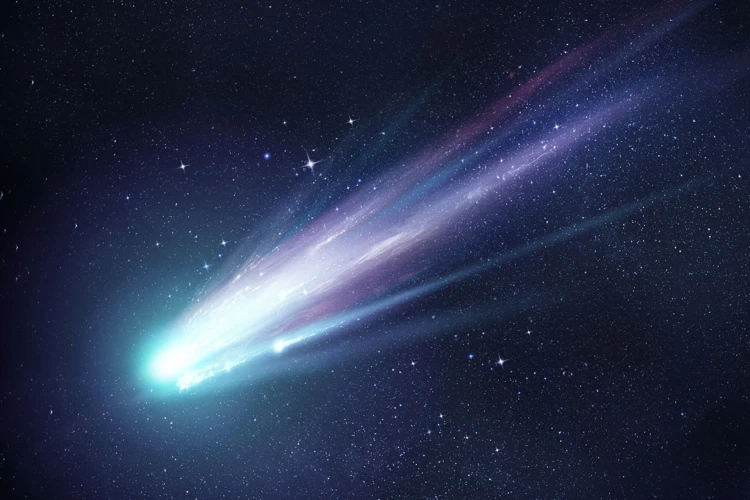
Comets are cosmic marvels that have fascinated astronomers and scientists for centuries. These celestial bodies are essentially icy objects that orbit the Sun in elongated, elliptical paths. Comets comprise a nucleus, which is a solid core made up of ice, rock, dust, and organic compounds. Surrounding the nucleus is a glowing coma, a hazy cloud of gas and dust that forms as the comet approaches the Sun, and it can span thousands of kilometers in diameter.
Comets are thought to originate from the outer regions of the Solar System, specifically the Kuiper Belt and the Oort Cloud. The Kuiper Belt is a region beyond Neptune that contains remnants from the early Solar System, while the Oort Cloud is a hypothetical vast shell of icy bodies surrounding the Solar System.
When a comet’s elongated orbit brings it closer to the Sun, the heat causes the icy nucleus to vaporize, creating an impressive tail that points away from the Sun. This tail, which can stretch for millions of kilometers, is a result of solar radiation and the solar wind interacting with the coma’s gases and dust.
| 1. Nucleus | The solid core of a comet composed of ice, rock, dust, and organic compounds. |
|---|---|
| 2. Coma | A glowing cloud of gas and dust that surrounds the nucleus, forming as the comet approaches the Sun. |
| 3. Tail | A stunning elongated trail of gas and dust that points away from the Sun, created by the vaporization of the nucleus. |
| 4. Origin | Comets are believed to originate from the Kuiper Belt and the Oort Cloud in the outer regions of the Solar System. |
Comets have long been considered celestial wonders, often regarded as harbingers of significant events throughout history. Their captivating beauty and mysterious nature have inspired awe and wonder in cultures around the world for centuries.
Astrobiology – The Search for Life
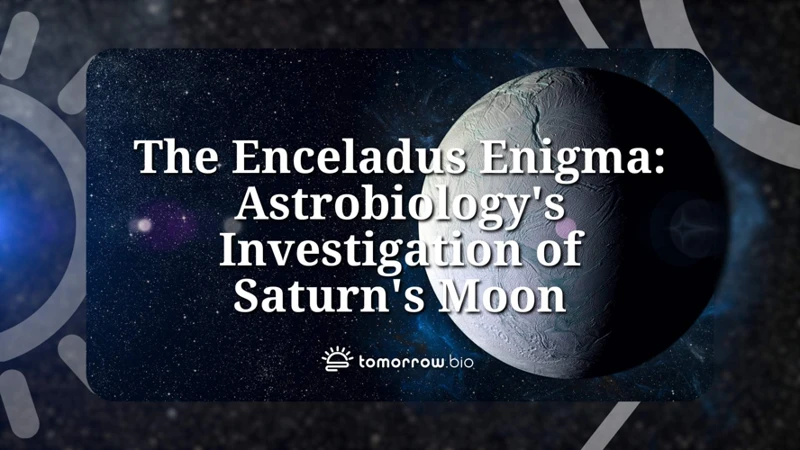
Astrobiology is a multidisciplinary scientific field that seeks to understand the origin, evolution, distribution, and future of life in the universe. It combines principles from various scientific domains, including biology, chemistry, physics, astronomy, and planetary science. The primary objective of astrobiology is to explore and determine if life exists beyond Earth.
Scientists studying astrobiology are motivated by the tantalizing possibility that life may have emerged under conditions similar to those found on our planet elsewhere in the universe. By studying the extreme environments and the building blocks of life on Earth, they can identify potential habitable zones in space.
Key areas of focus in astrobiology include the search for habitable environments in our solar system and beyond, the study of extremophiles (organisms that thrive in extreme conditions), the investigation of the origins of life on Earth, and the exploration of the potential for life to exist on other planets, moons, and exoplanets.
Through the examination of comets, astrobiologists aim to gain insights into the fundamental processes that led to the development of life on Earth. Comets, harboring organic compounds and water ice, may hold the keys to understanding how life originated. They could provide evidence for the delivery of essential building blocks, such as amino acids and nucleobases, through impacts on early Earth.
Astrobiology remains a fascinating and evolving field, driven by our innate curiosity and the desire to explore the cosmos in search of answers to one of humanity’s most profound questions: Are we alone in the universe?
The Connection

The connection between comets and astrobiology is a captivating field of study that explores the impact of comets on the origin of life, their potential as habitats for life, and their role in the panspermia hypothesis. Comets are composed of a multitude of organic compounds, including amino acids, which are the building blocks of life as we know it. These icy wanderers hold valuable clues about the chemical processes that may have led to the emergence of life on Earth and possibly other planets and moons in the universe.
1. The Role of Comets in the Origin of Life
Comets have been hailed as potential bearers of the building blocks of life, offering vital clues to the origin of life on Earth. These icy wanderers contain a rich combination of organic compounds and water, which are fundamental ingredients for the development of life as we know it.
When comets approach the inner Solar System and the Sun’s heat begins to melt their icy nucleus, they release a variety of volatile substances into space. These include simple organic molecules such as methane, ammonia, and hydrogen cyanide, as well as more complex compounds like amino acids, sugars, and nucleobases.
Many scientists speculate that these organic molecules found on comets could have interacted with the early Earth during the Late Heavy Bombardment, a period in the Solar System’s history when there was intense comet and asteroid activity. It is possible that these organic compounds delivered by comets played a crucial role in seeding the Earth with the raw materials necessary for life to emerge.
Laboratory simulations have demonstrated that when the organic molecules on comets come into contact with water and energy sources such as ultraviolet radiation or electrical discharges, they can give rise to more complex organic compounds, resembling the building blocks of life.
| – Organic Compounds | Comets contain a variety of organic compounds, including amino acids and sugars, essential for the development of life. |
|---|---|
| – Delivery to Earth | Comets may have delivered organic molecules to the early Earth during the Late Heavy Bombardment, contributing to the origin of life. |
| – Laboratory Simulations | Experiments show that the organic molecules found on comets can potentially form more complex compounds under suitable conditions. |
While the exact role of comets in the emergence of life on our planet remains a subject of ongoing research, the relevance of these cosmic wanderers in the origins of life is unquestionably captivating and continues to fuel scientific exploration and curiosity.
2. Comets as Potential Habitats for Life
Although comets are predominantly icy objects, scientists have hypothesized that they could potentially serve as habitats for life. The organic compounds found within the nuclei of comets, such as amino acids and hydrocarbons, are building blocks of life as we know it. These organic molecules have been detected in cometary material through various missions that have encountered and analyzed comet samples.
The subsurface of comets may also provide a protective environment from harsh cosmic radiation and extreme temperature fluctuations. The icy nucleus acts as a shield against radiation, preserving any potential microbial life from direct exposure. Deep beneath the surface, where temperatures are relatively stable, microbes could potentially find refuge.
One intriguing theory is that comets could have delivered the necessary ingredients for life to early Earth. During the Late Heavy Bombardment period, around 4 billion years ago, comets and asteroids bombarded our planet, potentially depositing organic molecules and water that could have jump-started the development of life.
| 1. Subsurface | The protective subsurface of comets may provide a stable environment shielded from cosmic radiation and extreme temperature fluctuations. |
|---|---|
| 2. Organic Compounds | Comets contain organic compounds that are essential building blocks for life. |
| 3. Delivery of Life’s Ingredients | Comets may have delivered organic molecules and water to early Earth, potentially contributing to the development of life. |
While the idea of life existing on comets remains speculative, further exploration and analysis of cometary material will continue to provide valuable insights into the potential habitability of these enigmatic objects.
3. Comets as Vehicles for Panspermia
The concept of panspermia proposes that life can be spread throughout the universe via comets and other celestial bodies. Comets, with their icy composition containing organic compounds, have enticingly been identified as potential vehicles for the transportation of life’s building blocks. As comets journey through space, they can encounter various environments and even cross paths with planets. This raises the intriguing possibility that if microorganisms or the necessary ingredients for life exist on comets, they may survive the journey and potentially seed life on other planets or moons they come into contact with.
One hypothesis is that comets could have delivered essential ingredients, such as amino acids, to a young Earth, providing the building blocks necessary for the development of life. These ingredients could have originated from the early Solar System or even from other star systems, bolstering the case for panspermia as a means of life’s distribution.
Panspermia also raises the question of whether comets could have played a role in potentially spreading life beyond Earth. As comets pass close to a planet or moon, they can release their material into the surrounding space. If this material contains viable microorganisms, it could potentially infect or colonize the celestial body it encounters. This possibility has led to scientific interest in studying the potential habitability of comets and their potential as transmitters of life.
While the scientific community continues to debate the plausibility and implications of panspermia, the study of comets has provided valuable insights into the potential for life’s existence beyond Earth. Exploring the connection between comets and panspermia not only deepens our understanding of the origin of life but also expands our perspectives on the vastness and interconnectedness of the universe.
Current Research and Exploration
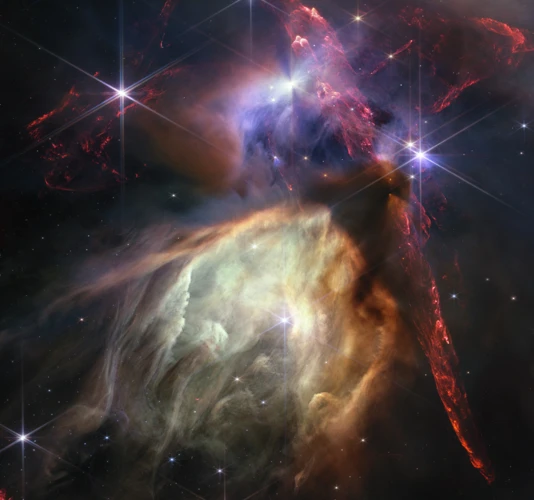
Current research and exploration efforts have propelled our understanding of comets and their connection to astrobiology to new heights. Scientists and space agencies around the world have undertaken numerous missions and studies to unravel the mysteries surrounding comets. These initiatives aim to study comets up close, investigate their composition, and analyze their potential for hosting life or providing insights into life’s origins.
| 1. Studying Comets Up Close | Spacecraft missions, such as NASA’s Stardust and ESA’s Rosetta, have provided remarkable insights into comets by collecting dust particles and transmitting high-resolution images of these celestial wanderers. |
|---|---|
| 2. Astrobiology Missions and Cometary Encounters | Several astrobiology missions, including NASA’s Astrobiology Field Laboratory and the upcoming ESA’s Comet Interceptor mission, aim to specifically study comets and their potential for harboring life or providing valuable clues about life in the cosmos. |
| 3. Analyzing Comet Samples | Scientists have been analyzing the samples collected from comets to determine their composition and search for organic molecules and key building blocks of life, providing valuable insights into the chemical makeup of these cosmic bodies. |
These groundbreaking missions and studies have not only expanded our knowledge of comets, but they have also pushed the boundaries of astrobiology, bringing us closer to understanding the potential for life beyond Earth.
1. Studying Comets Up Close
1. Studying Comets Up Close
Advancements in space exploration technology have allowed scientists to study comets up close and gather valuable data that contributes to our understanding of these enigmatic celestial bodies. Various missions, both past, and present, have provided unprecedented opportunities for close encounters with comets:
- The Rosetta Mission: Launched by the European Space Agency (ESA) in 2004, the Rosetta spacecraft rendezvoused with comet 67P/Churyumov-Gerasimenko in 2014. The mission successfully deployed a lander called Philae onto the comet’s surface, providing valuable insights into its composition and structure.
- The Stardust Mission: The NASA-led Stardust mission was launched in 1999 with the objective of collecting samples from the coma of comet Wild 2. In 2006, the mission successfully returned to Earth with precious comet dust particles, allowing scientists to analyze and learn more about the composition of comets.
- The Deep Impact Mission: This NASA mission, launched in 2005, involved deliberately impacting comet Tempel 1 with a projectile. By analyzing the resulting debris cloud, scientists gained valuable information about the composition and structure of the comet.
- The DART Mission: Scheduled to launch in 2021, NASA’s Double Asteroid Redirection Test (DART) mission aims to demonstrate a planetary defense technique by impacting the moon of a near-Earth asteroid. While not specifically targeting a comet, the mission will provide valuable insights into the dynamics of impacting objects and potentially offer relevant data for future comet encounters.
These missions, along with others, have greatly expanded our knowledge of comets, allowing scientists to study their composition, structure, and behavior up close. The data gathered from these missions has been instrumental in shaping our understanding of the role comets play in astrobiology and the mysteries surrounding the origins of life.
2. Astrobiology Missions and Cometary Encounters
Astrobiology missions have played a crucial role in deepening our understanding of comets and their potential connection to the origins of life. These missions have provided valuable insights through close encounters and detailed observations of comets.
One notable mission is the NASA Stardust spacecraft, which successfully flew close to Comet Wild 2 in 2004. During its encounter, the spacecraft collected particles from the coma of the comet using a specialized collector. Upon its return to Earth, scientists analyzed these precious samples to gain insights into the composition and structure of comets.
Another significant mission was the ESA’s Rosetta spacecraft, which rendezvoused with Comet 67P/Churyumov-Gerasimenko in 2014. Rosetta carried the lander Philae, which made history by successfully landing on the comet’s surface. This landmark achievement provided invaluable data on the physical and chemical characteristics of comets.
| Mission | Description |
|---|---|
| NASA Stardust | Analyzed samples collected from Comet Wild 2 to study its composition and structure. |
| ESA’s Rosetta | Rendezvoused with Comet 67P/Churyumov-Gerasimenko, deployed the lander Philae, and provided vital data on cometary characteristics. |
These missions have paved the way for future exploration and have laid the foundation for our understanding of comets and their significance in the context of astrobiology. They have sparked new questions and fueled the curiosity of scientists and researchers in their quest to unravel the secrets of comets and their potential role in the emergence of life.
3. Analyzing Comet Samples
Unlocking the secrets of comets and their potential connection to astrobiology requires the analysis of actual comet samples. Fortunately, there have been missions and endeavors aimed at collecting valuable comet material for scientific examination.
One such mission was the Stardust mission conducted by NASA, which successfully collected samples from Comet Wild 2 in 2004. The spacecraft deployed a sample return capsule that brought microscopic particles from the comet back to Earth. These particles are incredibly valuable to scientists as they provide insights into the chemical composition and physical properties of comets.
Upon analysis, researchers discovered that the comet particles contained complex organic molecules, amino acids, and even glycine – an amino acid that is a building block of life as we know it. This finding suggests that comets could potentially deliver the necessary ingredients for life to other planets through panspermia, the hypothesis that life can be transported from one celestial body to another.
The examination of comet samples also helps scientists understand the processes that occurred during the formation of the Solar System. By studying isotopic compositions, researchers can gain insights into the conditions in the early Solar System and the role comets played in delivering water and organic compounds to Earth.
This ongoing analysis of comet samples fuels both curiosity and imagination, providing valuable information for astrobiologists striving to understand the origins of life and the potential for life beyond our planet.
Implications and Future Prospects
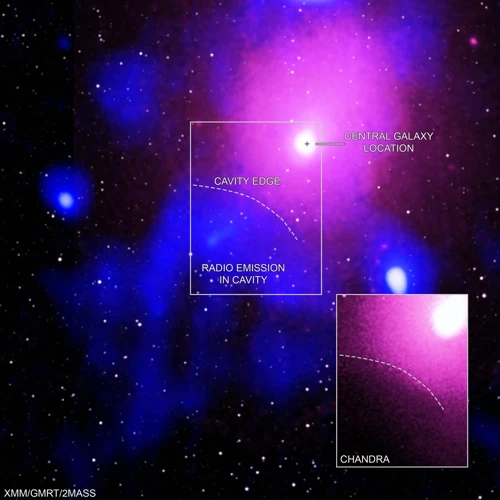
Studying the connection between comets and astrobiology carries immense implications for our understanding of life’s origin and existence beyond Earth. It opens up a world of possibilities and future prospects that could revolutionize our knowledge of the cosmos.
1. Searching for Life’s Origins: Exploring comets and their composition provides valuable insights into the building blocks of life. By studying the organic compounds present in comets, scientists can gain a deeper understanding of how life may have originated on Earth and potentially elsewhere in the universe. These findings could help unravel the mysteries surrounding the emergence of life.
2. Expanding the Habitable Zone: Comets have the potential to expand the habitable zone within our solar system. As repositories of water and organic compounds, comets could serve as potential habitats for microbial life. Discovering life on a comet would not only revolutionize our understanding of the conditions necessary for life, but it would also redefine the boundaries of habitability within our own cosmic neighborhood.
3. Exploring Panspermia: Comets serve as potential vehicles for panspermia, the theory that life can be transported between planetary systems. If comets contain microbial life, they could act as cosmic messengers, transporting life to other worlds within our own solar system or even beyond. The study of comets could shed light on the possibility of life’s existence on other celestial bodies.
| 1. Searching for Life’s Origins | Studying comets can provide insights into the origin of life and potentially reveal how it emerged on Earth and beyond. |
|---|---|
| 2. Expanding the Habitable Zone | Comets could act as potential habitats for microbial life, expanding our understanding of habitability in the universe. |
| 3. Exploring Panspermia | Comets could serve as vehicles for panspermia, transporting life between planetary systems and increasing the possibility of life beyond Earth. |
The implications of comets in the field of astrobiology are vast and promising. By further studying and exploring these celestial wanderers, we may come closer to answering the age-old question of whether we are alone in the universe.
Conclusion

In conclusion, the connection between comets and astrobiology is a tantalizing field of study that holds tremendous potential for unraveling the mysteries of life in the universe. Comets play a crucial role in the origin of life, as they carry essential organic compounds that may have sparked the emergence of life on Earth. Moreover, comets have also been identified as potential habitats for life, with their icy interiors providing a protected environment where microbial life could potentially thrive.
Furthermore, comets serve as vehicles for panspermia, the concept of life being transported between celestial bodies. The possibility that comets may have carried the building blocks of life to other planets or moons within our own Solar System or even beyond, opens up fascinating avenues for astrobiological research.
Current research and exploration efforts continue to shed light on the nature and composition of comets. Probes and missions such as the Rosetta spacecraft, which recently rendezvoused with comet 67P/Churyumov-Gerasimenko, have provided valuable data and unprecedented insights into these remarkable celestial bodies. Analyzing comet samples and studying comets up close is enabling scientists to better understand the role comets play in the origins of life and their potential as habitats for life.
The implications of the connection between comets and astrobiology are far-reaching, fueling our curiosity about the possibility of life beyond Earth. As technology advances, future missions and explorations hold promise for unlocking the secrets that comets hold and furthering our understanding of the potential for life in the cosmos. The study of comets continues to captivate and inspire scientists and laypeople alike, as we strive to answer one of humanity’s most profound questions: are we truly alone?
Frequently Asked Questions

1. What makes comets different from other celestial bodies?
Comets differ from other celestial bodies in their composition and behavior. Comets are primarily made up of ice, dust, and organic compounds, while other celestial bodies like planets are composed of solid and rocky materials. Additionally, comets exhibit a unique behavior where their tails form as they approach the Sun due to the vaporization of their icy nucleus.
2. How do comets form?
Comets are believed to form in the outer regions of the Solar System, where the cold temperatures allow for the preservation of volatile substances such as water and carbon dioxide as ice. Over time, these icy bodies come together to form larger objects known as comets.
3. Can comets bring water to other planets?
Yes, comets have the potential to deliver water to other planets. Comets are rich in water ice, and when they collide with a planet’s surface, the impact can release this water in the form of vapor or liquid, potentially providing a source of water for planetary environments.
4. Have we ever visited a comet?
Yes, in 2014, the European Space Agency’s Rosetta mission successfully reached the comet 67P/Churyumov-Gerasimenko and deployed a lander called Philae onto its surface. This historic mission provided valuable information about the composition and structure of comets.
5. Are comets a threat to Earth?
While comets have the potential to collide with Earth, the chances of a catastrophic impact are relatively low. Scientists actively monitor and track the trajectories of known comets to assess any potential risks and develop strategies for planetary defense, if necessary.
6. Are there signs of life on comets?
As of now, there is no definitive evidence of life on comets. However, the organic compounds and water ice found on comets are essential building blocks for life as we know it. Scientists continue to investigate comets for clues that may shed light on the emergence of life elsewhere in the universe.
7. Can comets collide with each other?
Yes, comets can collide with each other. These collisions can result in changes to their orbits, the release of dust and gas, and the formation of new comets. Such collisions offer scientists valuable insights into the composition and dynamics of comets.
8. How do scientists study comets?
Scientists study comets using a variety of methods. Space missions like Rosetta gather data by directly observing and analyzing comets up close. Telescopes on Earth and in space also provide valuable insights into the composition, activity, and behavior of comets.
9. Can comets be seen from Earth?
Yes, comets can sometimes be visible from Earth with the naked eye. When a comet’s orbit brings it closer to the Sun, it may become bright enough to be visible in the night sky. However, not all comets are easily visible, and their visibility depends on various factors such as their distance from Earth and their brightness.
10. How long do comets last?
The lifespan of a comet can vary. Some comets have very long orbital periods, taking thousands or even millions of years to complete a single orbit around the Sun. Others have shorter lifespans as they may collide with a planet or break apart due to gravitational forces or solar heating.
References
Frequently Asked Questions

1. What role do comets play in the origin of life on Earth?
Comets contain organic materials, including amino acids, which are the building blocks of life. These materials may have seeded Earth with the necessary ingredients for life to develop.
2. Could comets be potential habitats for life?
While comets are unlikely to support life as we know it due to their harsh conditions, they may serve as temporary habitats for microorganisms or extremophiles capable of surviving in extreme environments.
Panspermia is the theory that life on Earth originated from microorganisms or organic molecules transported through space. Comets could act as vehicles for panspermia, carrying the necessary building blocks for life to other planets or moons.
4. How do scientists study comets up close?
Scientists use telescopes to observe comets from a distance, and robotic spacecraft, such as NASA’s Deep Impact and Rosetta missions, have been sent to study comets in greater detail.
5. What are some astrobiology missions that have encountered comets?
Examples of astrobiology missions that have encountered comets include NASA’s Stardust and Rosetta missions, which collected valuable data and samples from comets.
6. How do scientists analyze comet samples?
Scientists analyze comet samples by studying their composition, structure, and isotopic ratios. Techniques such as mass spectrometry and imaging spectroscopy are used to gain insights into the organic compounds and volatile materials present in comets.
7. Have comets been found to contain evidence of extraterrestrial life?
As of now, no solid evidence of extraterrestrial life has been found in comets. However, the organic compounds and water discovered in comets are essential for life as we know it, increasing the possibility of finding signs of life in the future.
8. What implications could the connection between comets and astrobiology have?
Understanding the connection between comets and astrobiology can shed light on the potential for life beyond Earth and provide insights into how life may have originated and spread throughout the universe.
9. What are some future prospects in the study of comets and astrobiology?
Future prospects include more detailed analysis of comet samples, continued exploration of comets through space missions, and the search for biomarkers or signs of life in comets and other celestial bodies.
10. How does the study of comets and astrobiology impact our understanding of the universe?
Studying comets and astrobiology enhances our understanding of the potential for life elsewhere in the universe and provides valuable insights into the processes that govern the origin, evolution, and distribution of life.

